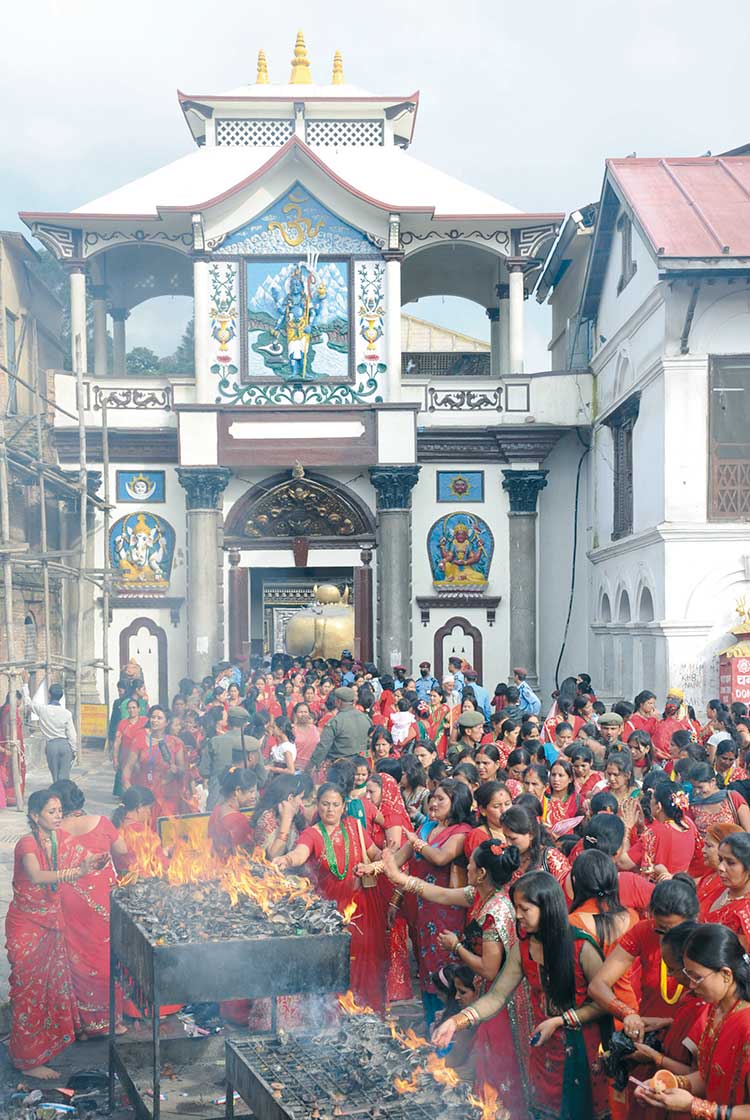“Every child is an artist. The problem is how to remain an artist once he grows up.” ~Picasso
On a day in August 1926, in a Nepali laborers’ village on the Tukvar tea estate near Darjeeling, a serious youngster of seven sat painting brightly colored symbols, gods and goddesses, flowers and birds on the adobe walls of a small house. He was guided by local women and encouraged by the village priest. Around him in the courtyard, women and girls had gathered to celebrate Teej, the annual festival honoring wives and mothers, and girls hoping for a good marriage.
Teej is observed by Hindu women to remember the devotion of the goddess Parvati, who fasted and prayed that the great Lord Shiva would marry her. He did, and in gratitude (the story goes) Parvati sent an emissary to earth to preach and spread the custom of singing and dancing, feasting and fasting, among women of all ages, who seek prosperity and longevity for their families.
At Tukvar that year, the first day of Teej was for singing, dancing and feasting. On Day 2 the women observed a fast. The third day was devoted to ritual bathing and prayer, after which the participants returned to the courtyard dressed in bright red saris, red bangles and red-beaded necklaces, with vermilion in their hair. It was the custom to select the maitighar (‘maternal home’) of one of the participants, and decorate it with religious symbols. While the priest attended to the worship of Lord Shiva, the villagers gathered to admire the young boy’s colorful art work.

Paintings like these are ephemeral. They don’t last long, gradually fading in the weather or rubbed off the wall during domestic work on the open porch. No matter how long the colors lasted, however, the young painter was proud of his accomplishment. The priest praised him and promised that he could paint again next year, and the next...
The boy was Lain Singh Rai, the youngest son of Ranglal Rai, a tea estate clerk. (Lain later adopted the clan name ‘Bangdel’ for his professional identity.) Even at such a young age, Lain’s talent was known throughout the village. He loved painting for the attention and praise it brought him, and for the thrill he felt with every brush stroke and image created, feelings that he could never fully describe nor explain.
“I was in high spirits on those days,” he said, “painting lots of flowers and things.” It was his passion.
As he grew up, his talents grew with him. In high school he was encouraged in both painting and writing. When asked what he would do after graduation, Lain confounded his father by saying he wanted be an artist. His father thought law, or medicine, or engineering, perhaps, but ...art? It’s fine that my son can paint, but how will he earn a living, he wondered. In 1939 Lain enrolled in the Calcutta Art school, where he excelled as a student. Thereafter, from 1945 to 1952, he worked as a commercial artist. During these years he also wrote several novels about expatriate Nepalese living under difficult conditions in northeast India.

In February 1952, funded by a generous gift from a wealthy Nepalese admirer of his art, Lain booked passage from Calcutta to Europe. His goal was Paris, the “City of Art.” He was sure that there he could improve his art by studying the techniques of the European masters. Nine years later, in 1961, he left Europe for Nepal where he introduced modern art concepts and became a leader in the Kathmandu art circles.
Bangdel’s contributions to art were significant and long-lasting. He has been called the .Father of Modern Art’ in Nepal, and some artists have named the years from 1961 until he passed in 2002 as the ‘Bangdel Era’.
When asked how it all began, he remembered the boy painting images on the house wall during Teej 1926―his earliest and happiest memories. The start of his art.
_______________________________________________________________________
This essay is adapted from the author’s book, Against the Current: The Life of Lain Singh Bangdel―Writer, Painter and Art Historian of Nepal (2004, Orchid Press). 2019 is the centenary year of Bangdel’s birth.








